OUR GALAXIES ARE BLOWING GIANT BUBBLES NOW

Galaxies can blow beautiful enormous bubbles. The Milky Way blows them. And new findings indicate that Andromeda, the Milky Way’s de facto twin, blows them too!
Nicknamed Fermi bubbles, these high-energy spheres were first seen coming from the Milky Way in 2010 via NASA’s Fermi telescope.
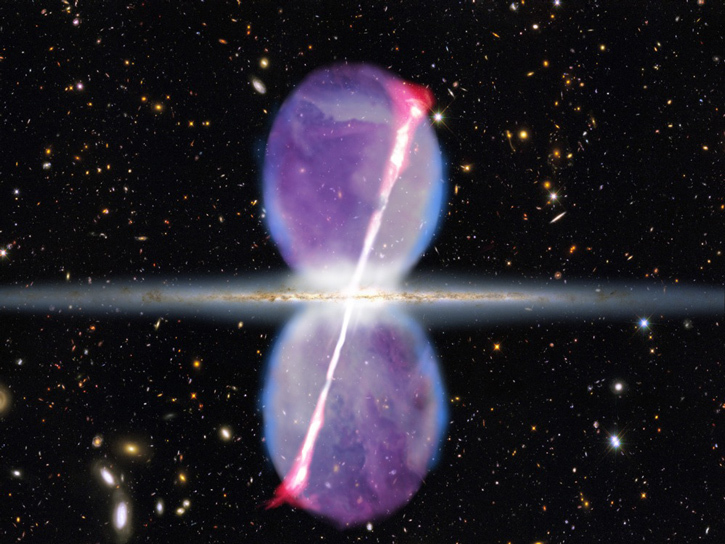
The Milky Way bubbles are about 30,000 light-years long. Scientists believe they are a result of “galactic wind” -- high-energy gamma ray particles blown out from the Milky Way’s.
Some say they could be cosmic “burps,” expelled, millions of years ago, by our galaxy’s central black hole.
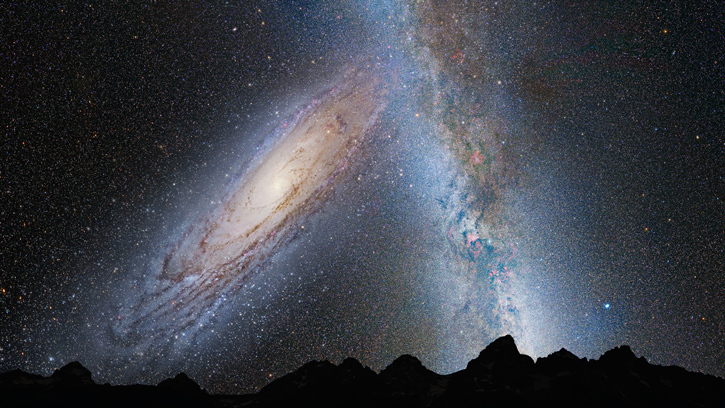
Andromeda swirls through the universe more than 2.5 million light-years from Earth. Scientists from Moscow State University recently found indications that Andromeda blows beautiful bubbles too.
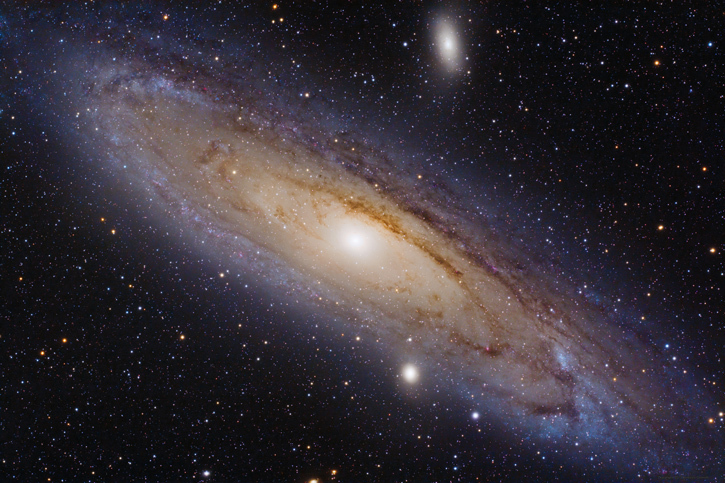
Study leader Maxim Pshirkov and his team were not initially looking for bubbles coming from Andromeda’s middle. They were trying to find a disk-shaped halo of gamma rays. They downloaded and deeply analyzed 7 years’ worth of archival data from NASA’s Fermi Gamma-ray Space Telescope.
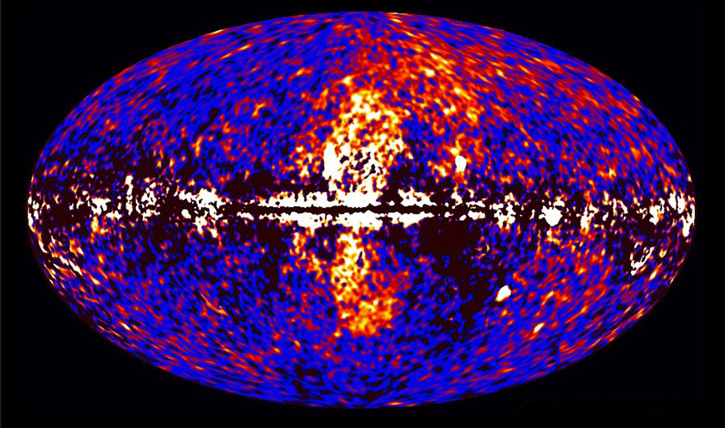
If the new analysis proves out, it indicates that Andromeda produced twin gamma ray bubbles, each about 20,000 light-years tall.
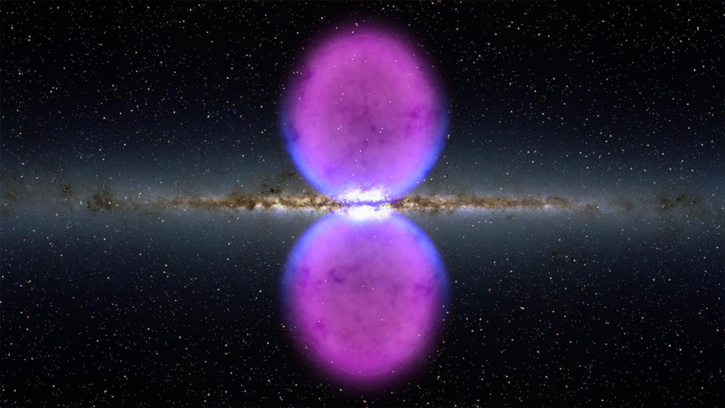
The scientists are on a mission to find more of these galactic bubbles, which they believe represent a whole new class of high-energy astrophysical phenomena. They also now want to look at Andromeda in other wavelengths, such as X-rays, to get higher resolution images.
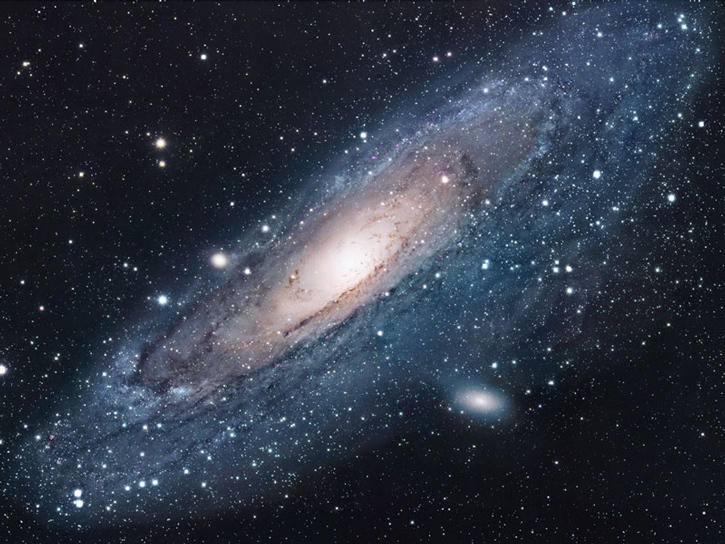
The Fermi-LAT Collaboration, a major gamma ray astronomy consortium, is conducting its own analysis of the Andromeda bubble data, with a report anticipated by the end of this year.

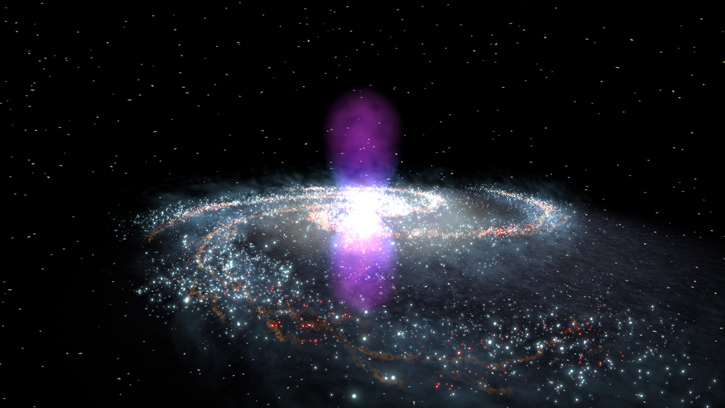
Read more about Beautiful Spheres inA Universe of Beautiful Spheres.
And check out more beautiful things happening now in BN Arts/Design, Nature/Science, Food/Drink, Place/Time, Mind/Body, and Soul/Impact Daily Fix posts.


IMAGE CREDITS:
- Image: Courtesy of Julie Turner, of Vanderbilt University. “Satellite Galaxy Being Pulled into the Galactic Black Hole.”
- Image: by David A. Aguilar of Harvard-Smithsonian Center for Astrophysics(CfA) “Gamma-ray jets (shown in pink) Extending Through the Fermi Bubbles.”
- Image: Courtesy of NASA; ESA; Z. Levay and R. van der Marel, STScI; T. Hallas; and A. Mellinger. “Earth's Night Sky in 3.75 Billion years, Andromeda (left) Fills the Field of View and Begins to Distort the Milky Way With Tidal Pull.”
- Image: by Lorenzo Comolli. Courtesy of NASA APOD. “The Andromeda Galaxy.”
- Image: Courtesy of NASA/Goddard. “Gamma-Ray Bubbles.”
- Image: Courtesy of NASA/Goddard. “Fermi Bubbles Extending from the Milky Way, Based on Gamma Ray & X-ray Data.”
- Image: by Robert Gendler. Courtesy of NASA APOD. “The Andromeda Galaxy.”
- Image: Courtesy of NASA/Goddard. “The Fermi Bubbles Extend From Our Galaxy’s Center.”
- Image: Courtesy of NASA/ESA/A. Feild (STScI). “NASA's Hubble Space Telescope Probed the Light From a Distant Quasar to Analyze the Fermi Bubbles.”
- Image: by BN App - Download now!
- Image: Courtesy of NASA, ESA, J. Dalcanton (University of Washington), B. F. Williams (University of Washington), L. C. Johnson (University of Washington), The PHAT Team, & R. Gendler. “Andromeda.”

